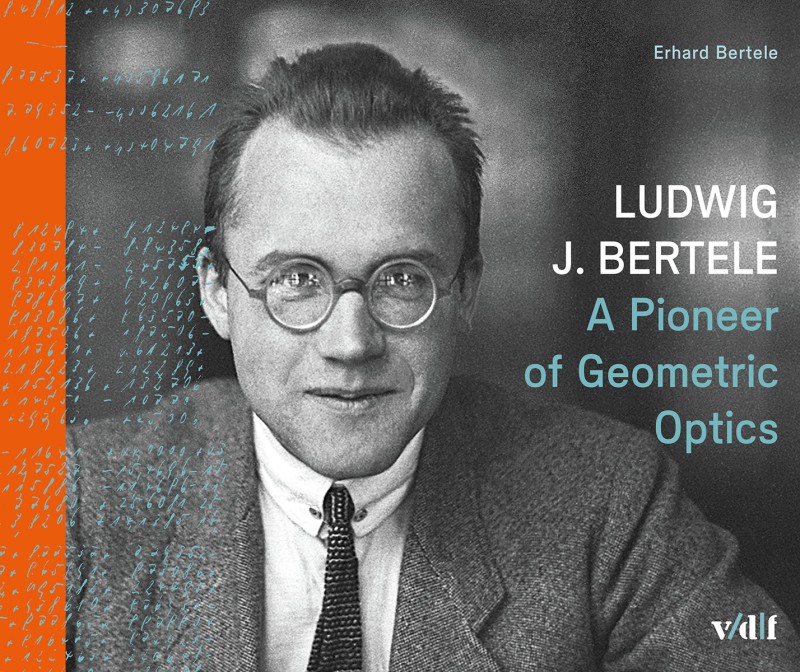Ludwig J. Bertele
- A Pioneer of Geometric Optics
Biography, Optics, Lenses, Photography, Camera Lens, History of Science, Leica, Wild, Zeiss, Contax, Hasselblad, Aerial Camera
Just over 100 years ago, 16-year-old Ludwig J. Bertele began an apprenticeship as an optical designer in Munich. The potential of this young man, so interested in mathematics, did not go unnoticed for long. At the age of only 20, he stunned the experts with an innovative optical design that was surprisingly powerful for that time. This fast, high-resolution lens made it possible to photograph indoors without flash and tripod for the first time. As a result, a well-equipped camera became the basis for the success of numerous famous photographers.
The work of Ludwig J. Bertele played a key role in the rapid development of geometrical optics and thus photography after the First World War. Later, his designs also set new standards in aerial photogrammetry and other specialized fields of optics.
This book tells the life story of an exceptionally talented man, autodidact and master of lens element combinations, who repeatedly set important impulses in optics research.
"As I am writing this, many of the hard copies have been snapped up, but that should not deter those of us interested in optics or the history of lenses for miniature cameras from locating a copy one way or another, for this is a fascinating and well written story about Bertele the man as well as a look into optical development from the 1920's to 1950's. ...
The book alternates between Bertele's personal history and the history of his lens designs, with early chapters also covering the history of lenses back into prehistory, and the development of optics since the beginning of the photographic record. Bertele (1900–1985) was an autodidact from a poor family who never went formally beyond secondary school, and was self-taught in mathematics and the Seidel Imaging Errors and formulas and their corrections. He went well beyond these concepts in his innovative designs – more or less as a pathfinder of new formulas and ways of conceptualizing what was needed for specific optical purposes. ...
The book is chock full of photographs: almost every area of interest covered in the text has its corresponding images, and these are well chosen and well reproduced. The translation is skillfully done and flows naturally, not the easiest thing to accomplish as this reviewer knows from personal experience working with other writers' texts. Extensive picture credits and references are listed as befits such a scholarly work."
(Ed Schwartzreich, Viewfinder 52/3, 2019, p. 50f.)
- Auflage: 1., 2019
- Seiten: 122 Seiten
- Abbildungen: zahlreiche Fotos/Abbildungen, durchgehend farbig
- Format in cm: 25,0 x 21,0
- Einbandart: gebunden
- ISBN: 978-3-7281-3955-9
- Sprache: Englisch
- Publikationsart: Biografie
- Lieferstatus: gedruckte Ausgabe vergriffen, als eBook lieferbar
Zusatzangebote
| Name | Dateityp | Zugriff |
| Inhaltsverzeichnis / Table of Contents | PDF-Dokument | |
| Leseprobe / Extract | PDF-Dokument |



